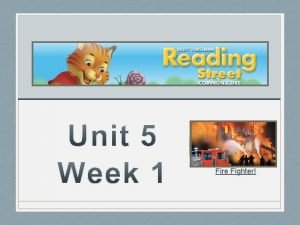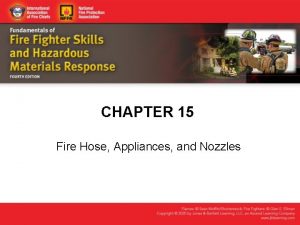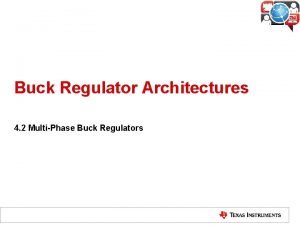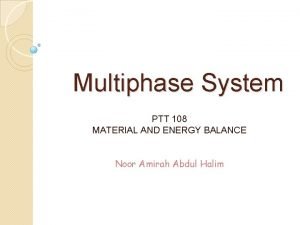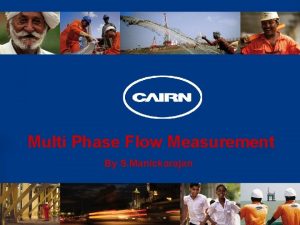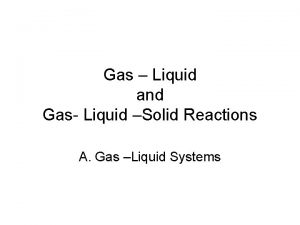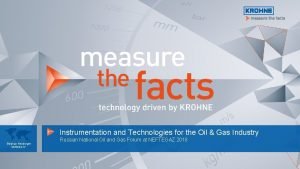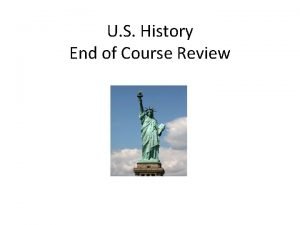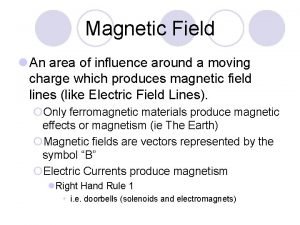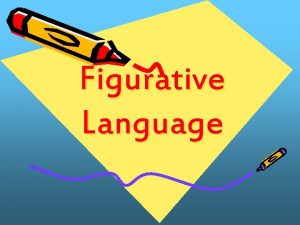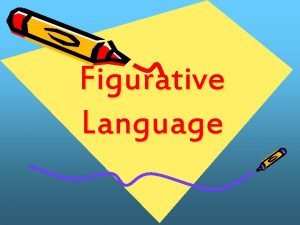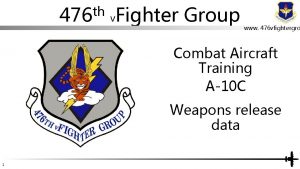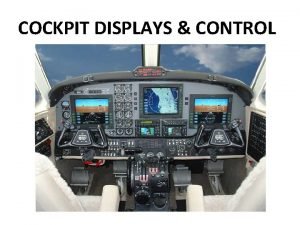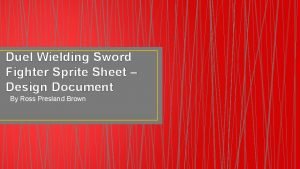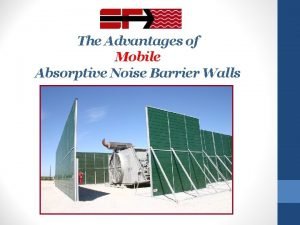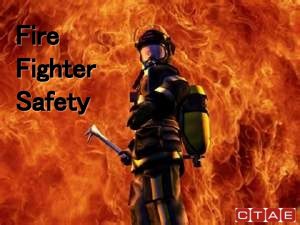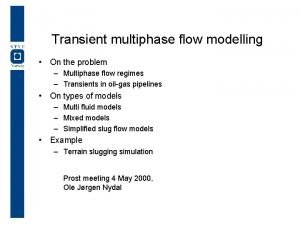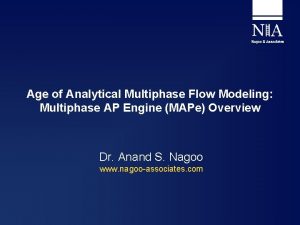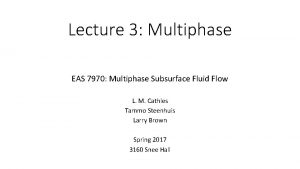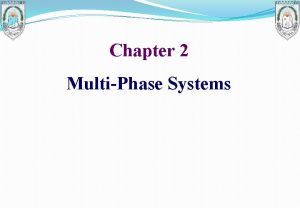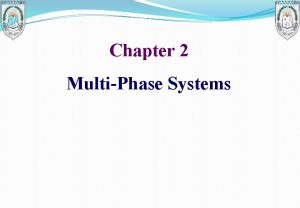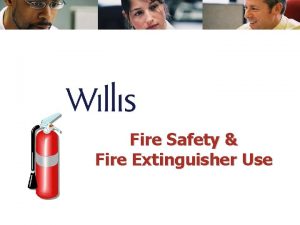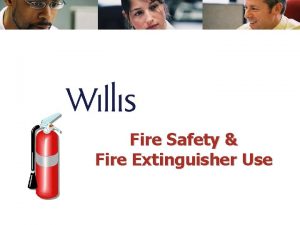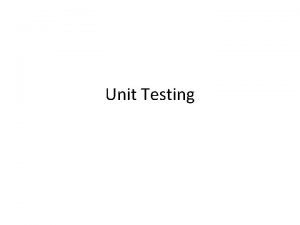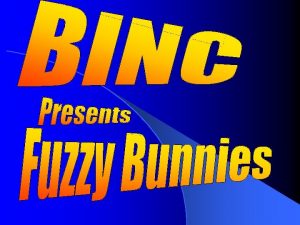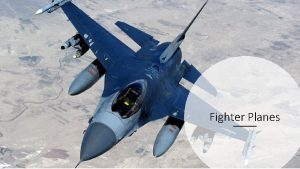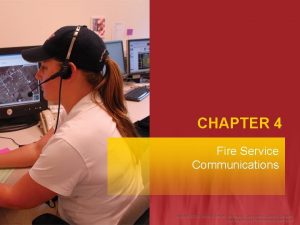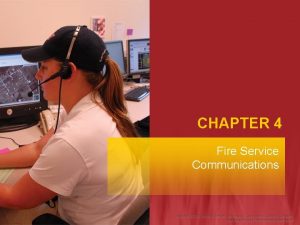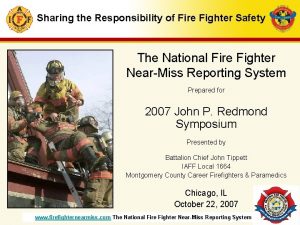Multiphase Study on Fire Fighter Safety and the





















- Slides: 21

Multiphase Study on Fire Fighter Safety and the Deployment of Resources Residential Fireground Field Experiments NIST Technical Note 1661 Issued April 2010

Agenda • • Project Overview Experiment Methodology Experiment Results Utilizing the Findings

Project Objectives Optimize a fire service leader’s capability to deploy resources to prevent or mitigate adverse events that occur in a risk/hazard filled environment. www. firereporting. org

Project Objectives View in Windows Media Player View in Adobe Flash Player If the video does not open, please download the Windows Media Player or the Adobe Flash Player.

Residential Fireground Experiment • Part 1 – Design appropriate fuel load • Part 2 – Fireground tasks experiments • Part 3 – Enhanced fuel load • Part 4 – Fire modeling

Part I: The Live Fire NFPA 1403 compliance: • Fuel package characterized by full scale compartment tests at NIST (NIST FR 4022) for desired size and repeatability • Fire: Four pallets with excelsior for simulated interior/exterior environmental conditions

Part II: Time to Task Tests Burn Room

Part II: Time to Task Tests Response: • 3 Engines, 1 Truck, 1 Battalion Chief, 1 Aide – Crew sizes: 2, 3, 4, 5 Effective Fire Fighting Force (EFF) Crew Size # Fire Fighters Chief and Aide On-Scene Total 2 8 2 10 3 12 2 14 4 16 2 18 5 20 2 22

Part II: Time to Task Tests Experiments: • Total of 24 experiments on 22 fireground tasks • 2 scenarios for each crew size – Close stagger – One-minute ladder truck lag – One-and-a-half minutes lag for each subsequent engine – Far stagger – Two-minute ladder truck lag – Two-and-a-half minutes lag for each subsequent engine • Each scenario ran in triplicate

Part II: Time to Task Tests

Part II: Time to Task Tests View in Windows Media Player View in Adobe Flash Player If the video does not open, please download the Windows Media Player or the Adobe Flash Player.

at on C n yd H r En ant du gin e ct En Siz 1 Po ga eu g si tio e P p Es n u ta att mp bl a ck is h lin 2 C ha -in- e rg 2 -o e u Ad Es Hyd t va r nc G tab an e ai t n lis Li ne /Fo h R IT rc ( D Wa e E ep te n r o try Ad loy n B C van ac Fire on ce k u ) d p G uct Bac lin ro P k un rim u e p H d L ary lin or ad e z. de Sea V r H or ent s in rch. 2 z. P H Ve nd lac or nt F. 2 lo e z. V nd or H ent. Fl #3 or o 2 z. nd or #2 H Ve or n Flo z. t. G or C ro #1 on Ve tro nt. un d C on l Ut Gro #2 il u t C on rol ities nd # du Uti lit (int 1 ct i e e C he Sec s ( rior ex ) c o k n C t he for da erio ck r) F ry fo ire Se a r E rc M Fire xt. h ( ec w al ha Ext ls. ni ca (ce ) l V ilin en g) til at io n tio op si Po Time (hr: min: sec) St Results: Time to Task Tests : 24: 00 : 20: 00 : 16: 00 : 12: 00 : 08: 00 : 04: 00: 01 2 -Person Crew 3 -Person Crew 4 -Person Crew 5 -Person Crew

Results: Time to Task Tests View in Windows Media Player View in Adobe Flash Player If the video does not open, please download the Windows Media Player or the Adobe Flash Player.

Part III: Room & Contents Fire • Focus areas – Structural Tenability q CO, CO 2, O 2 q Temperature q Smoke obscuration – Impact on Victim Rescue – Fire Growth Rate – Arrival Time q Early arrival q Late arrival • Fuel Package – Living room configuration – Sufficient for flashover – Total of 16 experiments

Part III: Room & Contents Fire Crew Size First Due Arrival Time 2 -Person Early Arrival of First Engine (6. 5 min) – close stagger 3 -Person Early Arrival of First Engine (6. 5 min) – close stagger 4 -Person Early Arrival of First Engine (6. 5 min) – close stagger 5 -Person Early Arrival of First Engine (6. 5 min) – close stagger 2 -Person Later Arrival of First Engine (8. 5 min) – close stagger 3 -Person Later Arrival of First Engine (8. 5 min) – close stagger 4 -Person Later Arrival of First Engine (8. 5 min) – close stagger No Response (Baseline) N/A

Part III: Room & Contents Fire • Tasks Causing Fire Behavior Change 1. 2. 3. 4. 5. 6. 7. Forced entry of the front door Water on fire Second floor burn room window ventilated Second floor front window, near corner ventilated Second floor front window, near front door ventilated First floor window beside the fire ventilated First floor window #2 self-ventilated at flashover • NFPA 1403 Compliance – Ventilation performed from outside – Suppression performed via remote monitor

Part IV: Fire Modeling NIST Fire Dynamics Simulator (FDS) 1. Slow growth rate fire 2. Medium growth rate fire 3. Fast growth rate fire

Results: Parts III and IV View in Windows Media Player View in Adobe Flash Player If the video does not open, please download the Windows Media Player or the Adobe Flash Player.

Results: Parts III and IV

Utilizing the Findings • • Understand the Report Based on Science Education is Key Tailor Presentation to Your Audience • Customize Use of Data • Remember the Goal

Questions or Comments
 Suffix of fire
Suffix of fire Which coupling goes on the inside of a straight hose roll?
Which coupling goes on the inside of a straight hose roll? Multiphase buck
Multiphase buck Antoine equation
Antoine equation Multiphase iterative design
Multiphase iterative design Agar mpfm
Agar mpfm Solid
Solid Multiphase flow meter
Multiphase flow meter Uttar pradesh fire prevention & fire safety rules, 2005
Uttar pradesh fire prevention & fire safety rules, 2005 African american fighter pilots
African american fighter pilots Kron the alien freedom fighter
Kron the alien freedom fighter Literal language vs figurative language
Literal language vs figurative language Flanker brand strategy
Flanker brand strategy A fighter brand is
A fighter brand is Parrot ate the guava as it was ripe identify the ambiguity
Parrot ate the guava as it was ripe identify the ambiguity Figurative language vs literal language
Figurative language vs literal language 476 fighter group
476 fighter group Unscramble fighter
Unscramble fighter Binocular digital cockpit
Binocular digital cockpit Katana zero sprite sheet
Katana zero sprite sheet Sound fighter systems cost
Sound fighter systems cost Reichstag fire who was the fire starter
Reichstag fire who was the fire starter
